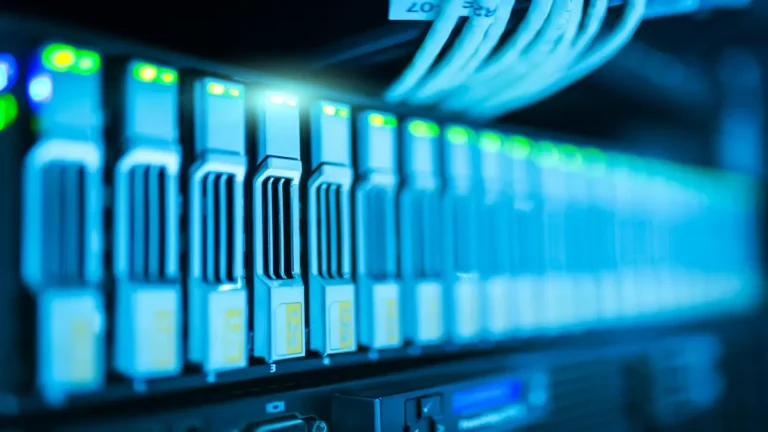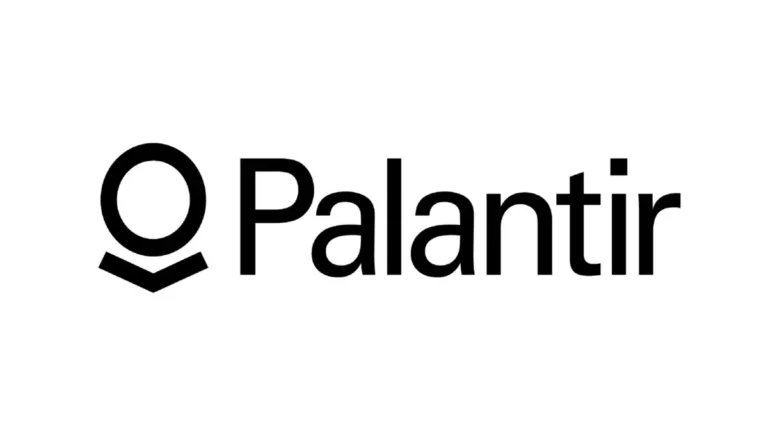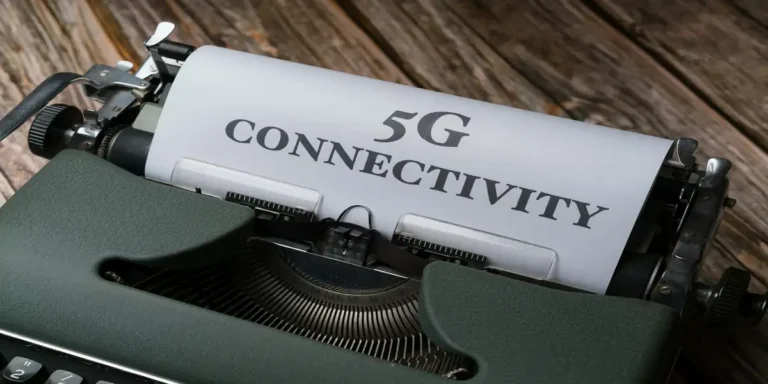PS5 vs PS5 Pro (2025): Should You Upgrade or Wait?
PS5 vs PS5 Pro. The PlayStation 5 was a game-changer when it launched—literally and figuratively. With lightning-fast SSD loading times, ray tracing…
PS5 vs PS5 Pro. The PlayStation 5 was a game-changer when it launched—literally and figuratively. With lightning-fast SSD loading times, ray tracing support, and powerful hardware that pushed console gaming into a new generation, the PS5 quickly became the must-have system for both casual and hardcore gamers. Fast forward to 2025, and Sony is once again at the center of the console conversation with the unveiling of the PS5 Pro—a more powerful, upgraded version of the base model.
As developers begin to push the limits of what the PS5 can handle, and 8K-capable TVs become more common in households, Sony’s timing feels deliberate. But with a strong existing user base and no shortage of great games on the standard PS5, the question arises: is the PS5 Pro truly worth the upgrade? Or is it just a luxury for elite gamers chasing higher frame rates and graphical fidelity?
This article will help you decide. We’ll break down the key differences between the PS5 and PS5 Pro in real-world terms—focusing on specs, performance, exclusive features, pricing, and value over time. We’ll even touch on how the upgrade could align with broader trends in gaming hardware and even how systems are managed—similar to how business process automation is reshaping industries beyond gaming.
Whether you’re a longtime PlayStation fan or a newcomer planning your next console investment, this guide will walk you through everything you need to know—so you can make a confident, future-proof decision.
1. PS5 vs PS5 Pro: Specs Comparison
At the heart of the debate between the PS5 and the PS5 Pro lies one question: how much more powerful is the PS5 Pro, really? With Sony aiming to extend the life of this console generation, the PS5 Pro is positioned not as a replacement for the standard PS5, but as a performance-enhancing alternative—especially for gamers with 4K or 8K setups looking for smoother, sharper gameplay.
Let’s break down the core specs to see how the two systems stack up side by side:
| Spec | PS5 | PS5 Pro (Expected/Leaked) |
|---|---|---|
| CPU | 8-core AMD Zen 2 @ 3.5 GHz | 8-core AMD Zen 2 @ 4.0+ GHz |
| GPU | 10.28 TFLOPs, RDNA 2 | 18+ TFLOPs, Custom RDNA 3 |
| RAM | 16 GB GDDR6 | 18 GB GDDR6 |
| Storage | 825 GB SSD | 1 TB Gen4 SSD |
| Resolution | Up to 4K @ 120Hz | Target 4K/8K @ 120Hz, more stable 4K |
| Ray Tracing | Supported | Improved ray tracing cores |
The most significant leap is in GPU power—moving from 10.28 TFLOPs in the base PS5 to a projected 18+ TFLOPs in the PS5 Pro. This will allow for more stable 4K gaming and better performance in ray-traced games, which can otherwise bottleneck framerate performance. Sony is also rumored to be improving the ray tracing hardware acceleration, which will be crucial as more next-gen titles adopt this visually demanding feature.
The Pro version is also expected to ship with AI-enhanced upscaling technology, akin to DLSS (Deep Learning Super Sampling) seen in Nvidia GPUs. This means the PS5 Pro could render games at slightly lower native resolutions but upscale them intelligently to 4K or even 8K—maintaining visual fidelity while saving on performance.
In terms of thermal performance, Sony may include improved cooling solutions, which were a common complaint with earlier PS5 models under heavy load. The Pro’s larger chassis will likely allow for more airflow and less fan noise, a small but notable quality-of-life improvement.
This kind of spec uplift parallels the trend we’re seeing in business process automation, where incremental but smart upgrades in hardware and software lead to massive efficiency gains without reinventing the wheel. Much like upgrading a company’s backend systems with smarter automation (see: business-process-automation), the PS5 Pro represents a powerful mid-cycle enhancement rather than a complete reset.
So, who benefits most from the spec bump? If you’re playing on a 1080p monitor, the upgrade may feel less dramatic. But for gamers with 4K TVs or next-gen monitors, the improvements in frame pacing, graphics fidelity, and futureproofing could make the PS5 Pro a worthwhile investment.
2. Graphics & Performance: How Much Better Is the Pro?
Graphics have always been the centerpiece of console wars, and in 2025, expectations for visual fidelity are higher than ever. The PS5 already set a strong benchmark in 2020, with real-time ray tracing, 4K resolution support, and fast SSD-based asset streaming. But the PS5 Pro is designed to push those capabilities further, addressing the visual and technical demands of new titles and high-end displays.
At the heart of the PS5 Pro’s graphical superiority is its upgraded GPU, which reportedly delivers 18 to 20+ teraflops of processing power—almost double that of the base PS5’s 10.28 TFLOPs. What does that mean in practical terms? Better rendering of complex environments, smoother frame rates at higher resolutions, and far more consistent performance in resource-intensive games.
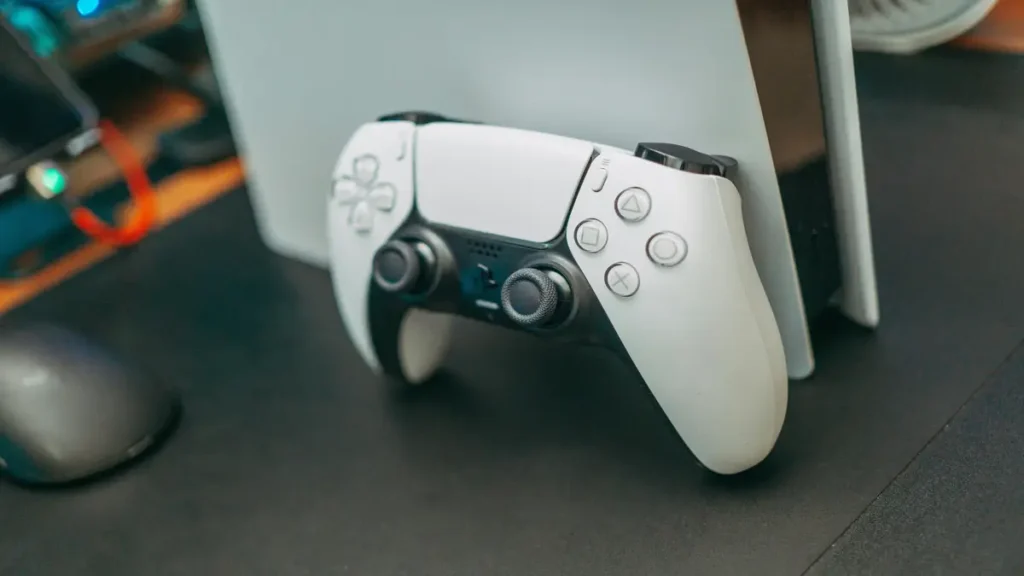
For instance, games like Horizon Forbidden West or Cyberpunk 2077 that push the PS5 to its limits can potentially run with higher texture quality, improved ray tracing effects, and reduced dynamic resolution scaling on the PS5 Pro. In some cases, users can expect locked 60 FPS gameplay at 4K—a big deal for titles that previously struggled to hold those numbers on the standard PS5.
Another notable addition is the rumored AI-enhanced upscaling, similar to NVIDIA’s DLSS or AMD’s FSR (FidelityFX Super Resolution). This would allow the PS5 Pro to render games internally at lower resolutions and upscale them with minimal quality loss, maintaining sharp visuals while conserving performance headroom. This is especially valuable for 4K and 8K gaming, where brute-force rendering isn’t always feasible without performance trade-offs.
From a storage perspective, the Pro’s 1TB SSD offers more room for game installations, and if it includes improved I/O bandwidth (as rumored), it could further cut down loading times and boost in-game asset streaming. For open-world games or live-service titles with heavy world data (think GTA 6 or Destiny 2), that’s a major plus.
In terms of visual detail, players can expect sharper textures, better ambient occlusion, smoother shadows, and potentially better HDR support. Combined, these upgrades create a more immersive, cinema-like experience—especially on newer OLED or Mini LED displays with 120Hz refresh rates.
A deep dive from Digital Foundry speculates that the PS5 Pro will bring a 45%–55% average frame rate increase in graphically demanding titles, depending on how developers optimize their games.
Still, the question isn’t just about numbers—it’s about feel. When switching from PS5 to PS5 Pro, gamers will likely notice snappier menus, more fluid gameplay, and richer world detail—especially in high-action scenes, dense lighting conditions, or competitive online play where every frame counts.
But for those on 1080p displays or non-HDR setups, these gains may be less obvious. Just like upgrading a graphics card without pairing it with a capable monitor, the Pro’s full power is best appreciated with the right display hardware.
3. Game Compatibility & Exclusive Enhancements
A critical question surrounding any mid-generation console upgrade is game compatibility: will you need to repurchase games? Will older titles run better? And are there new exclusives that only the upgraded hardware will handle?
The short answer is reassuring—the PS5 Pro will be fully backward compatible with all standard PS5 games, just like how the PS5 handled PS4 titles. That means your digital library, physical discs, and saved data will transfer seamlessly. Sony has emphasized that this is a “shared generation,” meaning developers are expected to release titles that run on both the PS5 and PS5 Pro, similar to the PS4/PS4 Pro transition.
Where things get interesting is in how games will leverage the additional power of the PS5 Pro.
Performance Boosts on Existing Games
Many existing PS5 games will receive performance patches or dynamic enhancements. This includes:
- Higher native resolutions (e.g., 4K instead of dynamic 1440p)
- Improved frame rates (e.g., 60 FPS locked instead of variable 45–60 FPS)
- Better ray tracing effects
- Faster loading times
Developers may include a “PS5 Pro Enhanced” badge to indicate these optimizations, similar to how certain PS4 titles were labeled for the PS4 Pro. Sony is reportedly encouraging developers to target 60 FPS with ray tracing at 4K on the Pro—something difficult to maintain consistently on the base PS5.
Even for non-patched games, the Pro’s brute-force approach means better performance in many cases due to GPU headroom and thermal efficiency. Games that suffered from minor dips or loading hiccups should run smoother automatically.
Future-Proofing for Upcoming AAA Titles
Looking ahead, the PS5 Pro may become the baseline for optimal performance in heavy-hitting future games like Grand Theft Auto 6, Death Stranding 2, and Marvel’s Wolverine. While these titles will still run on the base PS5, expect visual cutbacks or unlocked frame rates that fluctuate more noticeably. For competitive players or those using high-refresh displays, this can be a deciding factor.
Additionally, the Pro’s hardware is expected to support next-gen VR enhancements. While the PSVR2 already works with the PS5, future VR titles could demand more horsepower—making the Pro a better long-term match for immersive virtual experiences.
No Forced Exclusives—But Gradual Shifts Likely
Sony has confirmed that no first-party titles will be Pro-exclusive, which is good news for the existing PS5 user base. However, some third-party studios may begin optimizing for the Pro by default, meaning base PS5 users may experience cut-down textures, longer load times, or reduced lighting effects as more demanding games launch.
This trend mimics what we’ve seen in industries using hardware-optimized platforms—where systems can technically still run the same software, but the experience varies dramatically based on the processing power available. It’s the same reason why business process automation often includes phased rollouts across legacy and modernized systems, ensuring backward compatibility while leveraging new capabilities over time.
In summary, game compatibility won’t be a concern—but if you care about how your games run and want the absolute best experience in upcoming titles, the PS5 Pro offers meaningful enhancements that can help extend the life of your gaming investment well into the next phase of this console generation.
4. Price Comparison & Value for Money
When it comes to choosing between the PS5 and the PS5 Pro, the final decision for most gamers often comes down to one thing: price. As exciting as upgraded hardware sounds, it has to justify its cost—especially in a market where players are more price-sensitive and game prices themselves are climbing toward $70 USD for new releases.
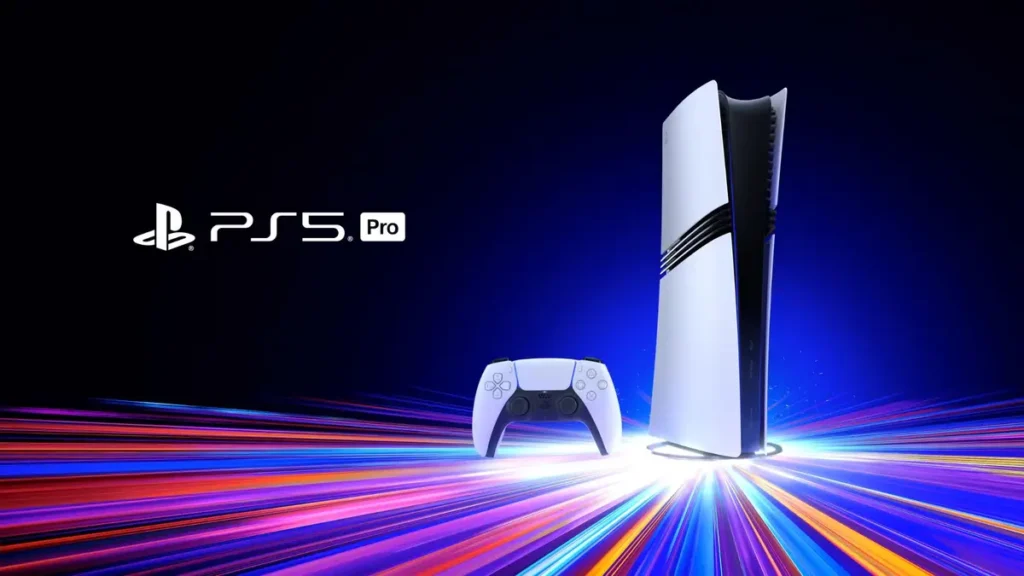
At launch, the standard PlayStation 5 was priced at $499, with a digital-only version at $399. While availability issues initially led to inflated resale prices, Sony has since stabilized production, and deals on the base PS5 are becoming more common—especially during seasonal sales or bundled packages.
The PS5 Pro, on the other hand, is expected to land in the $599 to $699 price range, depending on region and storage options. This positions it as a premium upgrade, rather than a new baseline. The higher price tag aligns with its performance bump, but it also raises important questions: What do you get for the extra $100–$200? And is that upgrade really worth it?
What You Get for the Price Increase
The Pro’s pricing reflects a significantly more powerful GPU, additional RAM, larger SSD storage, and potential upgrades in system cooling and AI-powered graphics enhancements. If you’re someone who plays visually intensive games like Cyberpunk 2077, Call of Duty, or future live-service titles with massive graphical fidelity demands, you’re more likely to see the benefit of this investment.
For users playing on 4K TVs or monitors with HDMI 2.1 and 120Hz refresh rate support, the PS5 Pro’s performance will feel more “unlocked.” In contrast, if you’re still on a 1080p setup, the visual and framerate differences may be less apparent in day-to-day gameplay.
Value Depends on Your Setup & Play Style
The PS5 Pro makes the most sense for gamers who:
- Own a 4K or 8K television with HDR and high refresh rates
- Play performance-demanding titles regularly
- Use VR (PSVR2) or plan to upgrade
- Prefer future-proofing and longer console cycles
On the flip side, the standard PS5 remains an incredible value—especially if you mostly play indie titles, narrative adventures, or aren’t concerned about pushing every pixel to its limit. For these gamers, the base PS5 still delivers premium next-gen experiences without the added cost.
It’s also worth noting that the PS5 game library remains the same across both consoles. Sony is not segmenting its player base with exclusive content, meaning both systems will access the same games, online services, and multiplayer communities. The Pro simply delivers a more optimized version.
Long-Term Value Considerations
As new games push hardware further, the PS5 Pro may age more gracefully over the next 3–4 years. It could extend your upgrade window to the PlayStation 6, especially if developers start targeting Pro-tier hardware by default. For those who skipped the PS4 Pro last generation and regretted it later when games started showing frame rate drops, this may be the redemption round.
Bottom line: if you have the right display, prioritize performance, and want the best of this generation, the PS5 Pro delivers noticeable value. But for budget-conscious players or those satisfied with solid 4K gaming, the PS5 still holds its own as one of the best console buys in years.
5. Who Should Upgrade (and Who Shouldn’t?)
The PS5 Pro sounds impressive on paper—and it is—but that doesn’t mean it’s for everyone. When investing in any piece of tech, especially a console with a long lifecycle, the key isn’t just understanding the specs—it’s knowing how you play and whether those extra features translate into real value for your lifestyle, habits, and setup.
Let’s break this down by user type to help determine who would truly benefit from the PS5 Pro, and who might be better off sticking with the standard PS5 or even waiting for the next full-gen upgrade.
Who Should Consider Upgrading to the PS5 Pro
1. Hardcore Gamers & Competitive Players
If you’re the type who plays the latest AAA titles on release day and values buttery-smooth frame rates, ray tracing, and quick load times, then the Pro is practically built for you. Especially if you play fast-paced games like Call of Duty, Fortnite, FIFA, or Elden Ring, having higher, more consistent FPS can give you a smoother, more immersive—and potentially competitive—advantage.
2. 4K or 8K Display Owners
Got a new OLED or Mini LED 4K TV with 120Hz refresh? Or planning to buy one in the next year? Then the PS5 Pro makes a lot more sense. The standard PS5 struggles to consistently hit native 4K at 60FPS in many demanding games. The Pro’s upgraded GPU and AI upscaling are much better suited to take full advantage of premium displays.
3. Content Creators & Streamers
Streaming and content creation require high performance and stable visuals. If you’re capturing gameplay for YouTube or Twitch, the PS5 Pro’s extra horsepower helps you maintain consistent resolution and frame pacing during recording and live sessions.
4. Early Tech Adopters & Long-Term Planners
If you’re someone who skipped the original PS5 or is planning to hold off on the PS6, getting a PS5 Pro now can bridge that gap and ensure you’re not left behind as games become more demanding.
Who Probably Doesn’t Need the PS5 Pro
1. Casual Gamers & Occasional Players
If you mainly play indie games, remasters, or non-graphics-heavy titles like Minecraft, Rocket League, or The Sims, the upgrade will likely feel unnecessary. The standard PS5 already delivers a fantastic experience for this audience.
2. 1080p or Basic 4K TV Users
Without a high-end display, you won’t fully see the visual gains the PS5 Pro offers. If you have no plans to upgrade your screen, the standard PS5 is still more than capable for your setup.
3. Budget-Conscious Buyers
With the cost of games, accessories, and subscriptions like PlayStation Plus, adding $100–$200 for the Pro model might not be justifiable—especially if you’re trying to stick to a tight budget or buy multiple consoles for a family.
4. Recent PS5 Owners
If you already own a standard PS5 purchased in the last year or two, upgrading now may not provide a significant leap in daily experience—unless you truly notice frame drops or plan to play a lot of new high-demand titles.
Bottom Line:
The PS5 Pro is not a necessity—it’s a premium option. If you’re a high-performance gamer with the right gear and the budget to match, you’ll absolutely notice the difference. But if your setup and habits don’t demand the extra power, the standard PS5 remains one of the best consoles ever made and still offers excellent value in 2025.
6. Should You Wait or Buy Now
With the PS5 Pro on the horizon, many gamers are stuck in decision paralysis. Do you buy the standard PlayStation 5 now, wait for the Pro release, or skip both and hope for a PlayStation 6 in a few years? This is a valid question, especially in 2025, where the console landscape is shifting and availability is less of a problem than it was at launch.
The answer depends on your current situation, budget, and gaming priorities. Let us walk through the key reasons to buy now and the reasons to wait, so you can make an informed decision without regret.
Reasons to Buy Now
If you do not own a PlayStation 5 and are looking for a high-quality gaming experience today, the base model is still an excellent choice. It supports the same game library as the Pro, delivers beautiful 4K gameplay, and is readily available in most markets. For many gamers, especially those who do not have a high-end television or do not care about minor graphical differences, the standard PS5 hits a great balance between price and performance.
Another key reason to buy now is game availability. The PS5 already has a strong library of exclusives like Spider-Man 2, Returnal, Ratchet and Clank: Rift Apart, and God of War Ragnarok. With backward compatibility and a steady stream of cross-gen titles, there is no shortage of great content to enjoy on the base model.
Also, keep in mind that the Pro will likely launch at a premium price point, potentially 100 to 200 dollars higher than the standard model. If you are cost-sensitive, the current version is easier to justify and provides a solid experience for most modern games.
Reasons to Wait
If you already own a PlayStation 5, waiting makes more sense. The PS5 Pro is expected to launch with significant performance improvements, and developers may begin optimizing future titles with the Pro hardware in mind. Waiting gives you access to those benefits and more future-proof hardware.
Additionally, if you are planning to invest in a new 4K or 8K television, the Pro is better suited to take full advantage of those displays. With enhanced ray tracing, improved frame rates, and possible AI upscaling, the Pro could extend the life of your console investment well into the next generation.
Finally, if you are on the fence and time is not a factor, consider waiting just a bit longer to see the confirmed specs, price, and performance benchmarks when the Pro officially launches. Real-world reviews will give a much clearer picture of how significant the difference really is.
Final Thought
If you want to play right now and get the most value for your money, the standard PS5 is still a top-tier console. But if you are patient and looking to maximize visual quality and long-term performance, the PS5 Pro might be worth the wait.
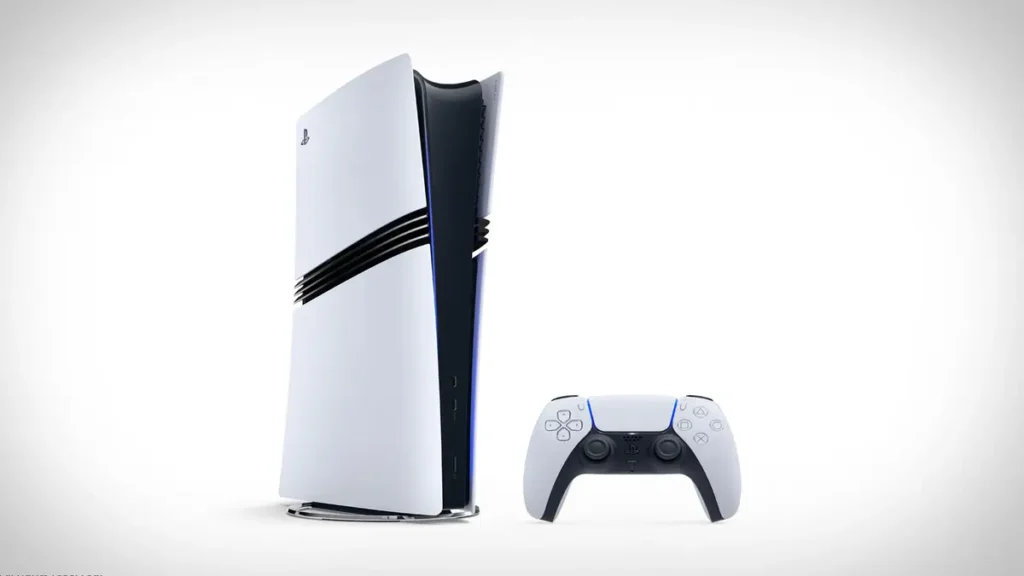
The arrival of the PS5 Pro in 2025 marks an important moment in the evolution of console gaming. As developers push games to new visual and technical heights, Sony is offering players a mid-generation solution that promises better performance, smoother gameplay, and a longer-lasting console experience. But as we have explored throughout this article, the decision to upgrade is not as simple as choosing the newer option.
For gamers who already own a PS5, the choice comes down to how much they value higher frame rates, 4K consistency, and long-term support for demanding titles. If you are playing on a high-end display and tend to gravitate toward performance-intensive games, the PS5 Pro offers meaningful advantages that will enhance your experience now and well into the future.
On the other hand, if you are just entering the PlayStation ecosystem or are more casual in your gaming habits, the standard PS5 still delivers exceptional value. It supports the same games, offers solid performance, and is available at a lower price point.
Ultimately, the PS5 versus PS5 Pro debate is not about right or wrong. It is about personal needs, preferences, and how you plan to engage with your games. Whether you choose to buy the PS5 now or wait for the Pro, one thing is clear: you will be getting access to one of the most powerful and immersive gaming platforms ever created.
No matter which version you go with, what matters most is that your choice fits your gaming goals, your hardware setup, and your budget. In the end, the best console is the one that delivers the most enjoyment — and with either the PS5 or the PS5 Pro, that is exactly what you will get.



